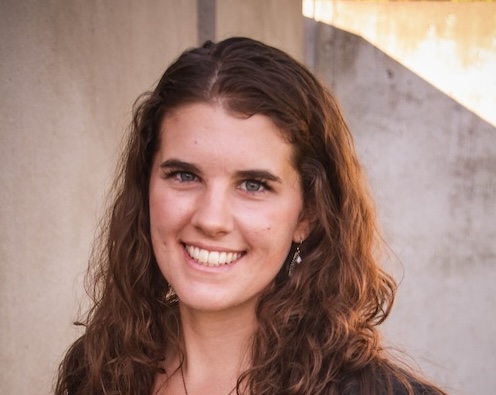Overflow in Signature Room on the 5th Floor in Summit
Thursday 20th June
- 11am\ Gallery Tour with Curator and Artists
- 1:30pm\ Panel Discussion with Tom White, Varvara Guljajeva, Valdemar Danry, Avijit Ghosh and Luba Elliott
- 5pm\ Gallery Tour with Curator and Artists
Today’s Pictures, Tomorrow’s Training Data: The Synergy Between Human Creativity and AI
Join Andrea Gagliano, Senior Director of AI/ML at Getty Images, for an engaging session that explores the dynamic symbiotic relationship between artificial intelligence and human creativity. The conversation will focus on how training data plays a crucial role in the effectiveness and quality of outputs—specifically how AI models can generate more authentic and culturally relevant visual content that is better reflective of modern society today. Andrea will also discuss the imperative of supporting creators and respecting intellectual property through content licensing, as well as recurring compensation to ensure that models are fueled responsibly, and technologies can be harnessed to push the boundaries of AI creativity versus hinder it.

Demonstration List
Infinite-ISP - An Adaptive soft ISP solution for Diverse Image processing Applications, Sohaib Imran Bhatti, Bilal Zafar, Muhammad Abdullah
Interactive Image Segmentation Guided by Visual Prompting, Thomas Frick, Cezary Skura, Filip M. Janicki, Roy Assaf, Niccolo Avogaro, Daniel Caraballo, Yagmur G. Cinar, Brown Ebouky, Ioana Giurgiu, Takayuki Katsuki, Piotr Kluska, Cristiano Malossi, Haoxiang Qiu, Tomoya Sakai, Florian Scheidegger, Andrej Simeski, Daniel Yang, Andrea Bartezzaghi, Mattia Rigotti
LipDub The Inclusive Translation Canvas, Amogh Subbakrishna Adishesha, Stanislau Beliasau
A Live Demo of Single-Photon Imaging and Applications, Varun Sundar, Sacha Jungerman, Mohit Gupta
High Speed In-Pixel Feature Tracking, Laurie Bose
CLIP-InterpreT: An interpretability Tool for CLIP-like Models, Avinash Madasu, Yossi Gandelsman, Vasudev Lal, Phillip Howard
WildVision Arena : Benchmarking Multimodal LLMs in the Wild, Yujie Lu, Dongfu Jiang, Wenhu Chen, William Wang, Yejin Choi, Bill Yuchen Lin
PathChat, an interactive vision-language AI assistant for human pathology, Ming Y. (Max) Lu, Richard J. Chen
Multimodal Video Understanding System for ESCS Assessment Context, Jitesh Jain,Christy Yoon, Kaori Terol Aveiro*, Hedda Meadan,Jinjun Xiong,Humphrey Shi
Co-operate Sign: learning sign language with real-time feedback on laptop, Yuting Peng,Yuecong Min,Xilin Chen
AI3D Desktop, Yosun Chang
BEST DEMO AWARD Gaussian Splatting SLAM, Hidenobu Matsuki, Riku Murai
Robust depth perception through Virtual Pattern Projection, Luca Bartolomei, Matteo Poggi, Fabio Tosi, Andrea Conti, Stefano Mattoccia
Generating Emotional 3D Talking Heads from Speech, Federico Nocentini, Claudio Ferrari, Stefano Berretti
MINTest Demo, Daniel DeAlcala, Aythami Morales, Gonzalo Mancera, Julian Fierrez, Ruben Tolosana, Javier Ortega-Garcia
Analysis of 3D Pathology Samples using Weakly Supervised AI, Andrew H. Song, Faisal Mahmood
PIGEON: Predicting Image Geolocations in GeoGuessr, Lukas Haas,Michal Skreta,Silas Alberti
- Yufei Ye, Carnegie Mellon University
- Tarun Kalluri, UC San Diego
- Zhen Dong, University of California, Berkeley
- Matthew Kowal, York University
- Ms. Yunhua Zhang, University of Amsterdam
- Hyung-gun Chi, Purdue University
- Zuoyue Li, ETH Zurich
- Van Nguyen Nguyen, Ecole des Ponts ParisTech, France
- Shivangi Aneja, Technical University of Munich
- Wentao Bao, Michigan State University
- Zhengfeng Lai, University of California, Davis
- Inhwan Bae, Gwangju Institute of Science and Technology
- Supreeth Narasimhaswamy, Stony Brook University
- Jiawei Ma, Columbia University
- Shuyang Sun, University of Oxford
- Anna Kukleva, Max-Planck-Institute for Informatics
- Gowthami Somepalli, University of Maryland, College Park
- Siwei Zhang, ETH Zurich
- Tz-Ying Wu, University of California San Diego
- Thanh-Dat Truong, University of Arkansas
- Changhoon Kim, Arizona State University
- Vaibhav Vavilala, University of Illinois at Urbana-Champaign
- Jason Y. Zhang, Carnegie Mellon University
- Harsh Rangwani, Indian Institute of Science, Bangalore
- Xizi Wang, Indiana university bloomington
- Chen Wei, Johns Hopkins University
- Tan Wang, Nanyang Technological University
- Yi-Wen Chen, University of California, Merced
- Seonguk Seo, Seoul National University
- Yining Hong, UCLA
- Hanjing Wang, Rensselaer Polytechnic Institute
- Sheng Cheng, Arizona State University
- Shraman Pramanick, Johns Hopkins University
- Navaneet K L, University of California, Davis
- Lahav Lipson, Princeton University
- Jihyung Kil, The Ohio State University
Overflow in Signature Room on the 5th Floor in Summit
Panel Discussion with Tom White, Varvara Guljajeva, Valdemar Danry, Avijit Ghosh and Luba Elliott
Proteins mediate the critical processes of life and beautifully solve the challenges faced during the evolution of modern organisms. Our goal is to design a new generation of proteins that address current-day problems not faced during evolution. In contrast to traditional protein engineering efforts, which have focused on modifying naturally occurring proteins, we design new proteins from scratch to optimally solve the problem at hand. Increasingly, we develop and use deep learning methods to design amino acid sequences that are predicted to fold to desired structures and functions. We also produce synthetic genes encoding these sequences and characterize them experimentally. In this talk, I will describe several recent advances in protein design.

All full passport registrations are invited – ORANGE LANYARDS
Get ready for a musical extravaganza featuring ten talented members of our community who will perform during the reception. Grab your dancing shoes and get ready to move with the CVPR House Band bringing some much needed entertainment to this year's conference!
Buffet Dinner is available on the ExHall Level and Drinks + Live Music will be in the Ballroom on the 5th floor.
*Guests are not permitted. Everyone must be a full-conference registration to attend the reception.